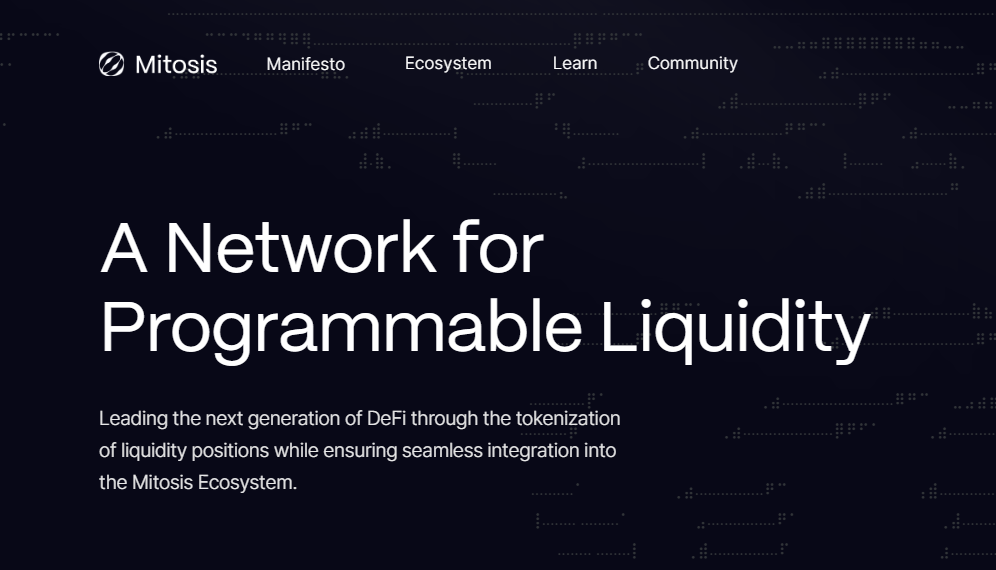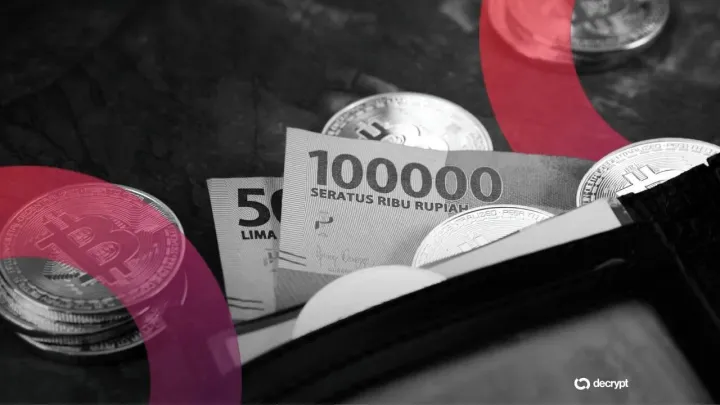Mitosis: Transforming DeFi Liquidity with Programmable Assets
This article will explore how Mitosis transforms liquidity provision through tokenization, cross-chain compatibility, and a community-driven governance model.

Introduction
Liquidity management remains one of the most pressing challenges in decentralized finance (DeFi), particularly in multi-chain ecosystems. Traditional liquidity solutions often struggle with inefficiencies such as fragmented capital, illiquid positions, and unsustainable yield farming strategies. Mitosis, a cutting-edge DeFi protocol, addresses these challenges by introducing programmable liquidity solutions that enhance capital efficiency and accessibility.
This article will explore how Mitosis transforms liquidity provision through tokenization, cross-chain compatibility, and a community-driven governance model.
The Core Innovation: Programmable Liquidity
Mitosis is not a traditional Layer 1 (L1) blockchain but a DeFi protocol designed to optimize liquidity across multiple networks. By leveraging Ecosystem-Owned Liquidity (EOL), Mitosis allows liquidity providers (LPs) to deposit assets into Mitosis Vaults and receive derivative tokens known as miAssets (e.g., depositing eETH yields meETH) at a 1:1 ratio. These miAssets serve as programmable liquidity units that can be utilized in other DeFi applications, including lending, staking, and trading.
This innovation addresses key inefficiencies by:
- Transforming static liquidity into dynamic, reusable assets.
- Enabling seamless liquidity movement across supported chains like Ethereum, Arbitrum, and others.
- Increasing capital efficiency for liquidity providers while reducing reliance on short-term incentive structures.
Multi-Chain Integration and Capital Efficiency
One of DeFi's biggest hurdles is liquidity fragmentation across various blockchains. Mitosis solves this by utilizing smart contracts that facilitate scalable and efficient cross-chain liquidity management. The protocol integrates with partners such as Ether.fi, Symbiotic, and Hyperlane, enhancing its multi-chain capabilities and broadening the scope of its liquidity applications.
The key components of its liquidity framework include:
- Ecosystem-Owned Liquidity (EOL): Represented by miAssets, allowing LPs to participate in governance and influence liquidity distribution.
- Matrix Liquidity Framework: Represented by maAssets, offering time-based reward structures for long-term liquidity providers.
By structuring liquidity provision into these frameworks, Mitosis ensures that LPs benefit from sustainable yield strategies while mitigating the risks associated with impermanent loss and capital inefficiencies.
Community Governance and Incentivization
A core principle of Mitosis is its decentralized governance model, empowering LPs to influence liquidity allocation through a decentralized autonomous organization (DAO). This approach grants liquidity providers greater bargaining power and access to competitive reward structures, fostering a more sustainable and community-driven ecosystem.
Additionally, Mitosis runs engagement campaigns such as:
- The Expedition Campaign: An initiative rewarding users with MITO Points for holding miAssets, speculated to be a criterion for a future $MITO governance token airdrop.
- Game of MITO Testnet: An incentivized testnet where users can earn rewards for participating in liquidity provisioning and ecosystem development. Blog post on the Testnet Report...
Financial and Market Impact
Mitosis has demonstrated significant traction in the DeFi space, raising $7 million in funding and surpassing $80 million in Total Value Locked (TVL) within months of its vault operations. Its rapid growth is attributed to its novel liquidity framework and strong community engagement. However, as with any emerging DeFi protocol, risks such as smart contract vulnerabilities and market volatility remain concerns that users should evaluate.
Conclusion
Mitosis is redefining liquidity provision in DeFi by introducing programmable liquidity assets that enhance capital efficiency and cross-chain scalability. Its innovative approach, backed by a strong governance model and active community engagement, positions it as a game-changer in the evolving DeFi landscape. As the ecosystem grows, Mitosis has the potential to become a foundational protocol for decentralized liquidity management.
Users can visit the official site at mitosis.org or follow community discussions for the latest updates.
Mitosis is not just a DeFi protocol but a movement toward a more efficient, scalable, and community-driven liquidity ecosystem.


Comments ()